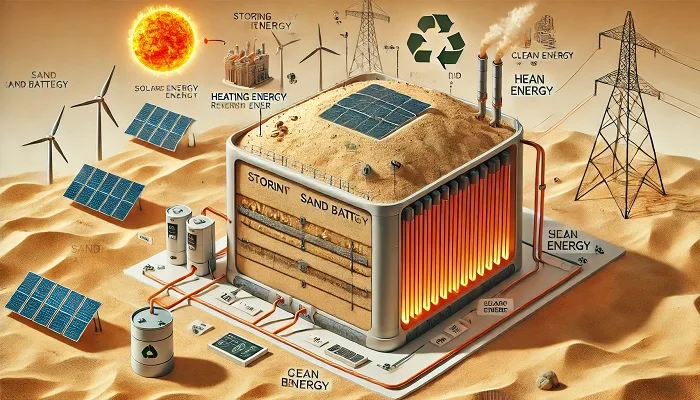
Exploring Sand Battery Technology
Sand battery technology is an innovative energy storage solution that harnesses the thermal properties of sand to store and release energy. This technology has gained significant attention due to its potential to enhance renewable energy storage and distribution. The concept, while relatively new in practical applications, has roots in traditional thermal energy storage methods. In this article, we will delve into the various aspects of sand battery technology, its working principles, effectiveness, current applications, potential future uses, and overall feasibility.
What is Sand Battery Technology and When Did It Appear?
Sand battery technology utilizes the thermal capacity of sand to store energy in the form of heat, which can be later converted back into electricity. This method capitalizes on sand’s ability to retain heat for extended periods, making it a reliable medium for energy storage. The idea of using sand for thermal storage is not entirely new; it draws from historical practices where natural materials were used to retain and release heat. However, the modern adaptation of sand batteries for large-scale energy storage began gaining traction in the early 21st century, particularly as renewable energy sources like solar and wind became more prevalent. The first significant implementations of this technology started appearing around 2015, driven by the need for efficient and sustainable energy storage solutions.
How Does Sand Battery Technology Work?
The operation of a sand battery is based on a relatively simple yet effective principle. During periods of excess energy production, such as when solar panels generate more electricity than is needed, the surplus energy is used to heat up sand. This process involves converting electrical energy into thermal energy, which is then stored in the sand. The sand acts as a thermal reservoir, maintaining high temperatures over time. When there is a demand for electricity, the stored thermal energy is converted back into electrical energy through a thermodynamic process. This typically involves using the heat to generate steam, which then drives a turbine connected to an electric generator. The efficiency of this conversion process is a critical factor in the overall effectiveness of the technology.
How Effective is Sand Battery Technology?
The effectiveness of sand battery technology is influenced by several factors, including the thermal properties of the sand used, the efficiency of the heat-to-electricity conversion process, and the overall system design. Studies and pilot projects have shown that sand batteries can achieve energy storage efficiencies of up to 80%. This is comparable to other forms of thermal energy storage but with the added benefits of lower material costs and environmental impact. The thermal stability and high specific heat capacity of sand make it an ideal medium for storing large amounts of energy over long periods. Furthermore, sand batteries are scalable, allowing for their use in both small-scale residential settings and large-scale industrial applications.

Where is Sand Battery Technology Already Used?
Sand battery technology has seen implementation in various parts of the world, particularly in regions with significant renewable energy infrastructure. In Finland, for example, a company named Polar Night Energy has developed a sand-based thermal storage system that is integrated with local renewable energy grids. This system helps balance energy supply and demand, ensuring a stable energy flow even during periods of low renewable energy generation. Similar projects are underway in countries like Germany and the United States, where sand batteries are being tested for their ability to store energy from solar and wind farms. These installations demonstrate the practicality and benefits of sand battery technology in real-world scenarios.
Where Else Can Sand Battery Technology Be Applied?
Beyond its current applications, sand battery technology holds promise for a variety of other uses. One potential area is in residential energy storage, where sand batteries could provide a sustainable and cost-effective solution for homeowners looking to store excess solar energy. Additionally, this technology could be used in remote and off-grid locations, where traditional energy storage solutions may be impractical or too costly. Industrial applications are another promising area, particularly in sectors that require high-temperature processes. By integrating sand batteries into these processes, industries could reduce their reliance on fossil fuels and lower their carbon footprint. The versatility and scalability of sand battery technology make it suitable for a wide range of applications.
How Much Sense Does This Make and How Effective Is It?
The practicality and effectiveness of sand battery technology are evident in its growing adoption and successful pilot projects. Its relatively low material costs and environmental impact make it an attractive option compared to other energy storage methods. The ability to store large amounts of energy over extended periods without significant degradation further enhances its appeal. While there are challenges, such as optimizing the heat-to-electricity conversion efficiency, the overall benefits of sand battery technology outweigh these obstacles. As the world continues to transition towards renewable energy, sand batteries offer a promising solution for overcoming the intermittency issues associated with solar and wind power. The continued development and refinement of this technology are likely to play a crucial role in the future of sustainable energy storage.





